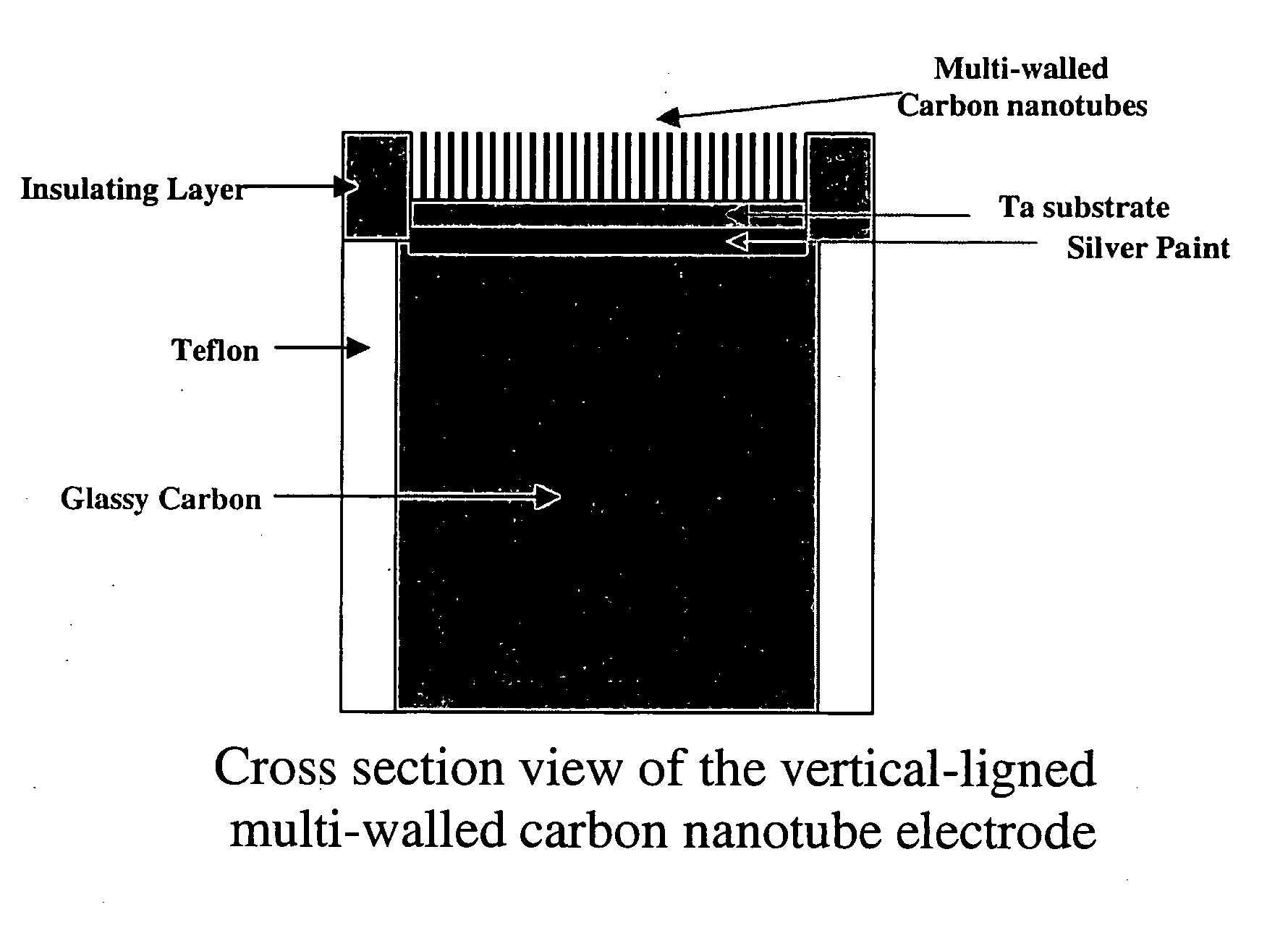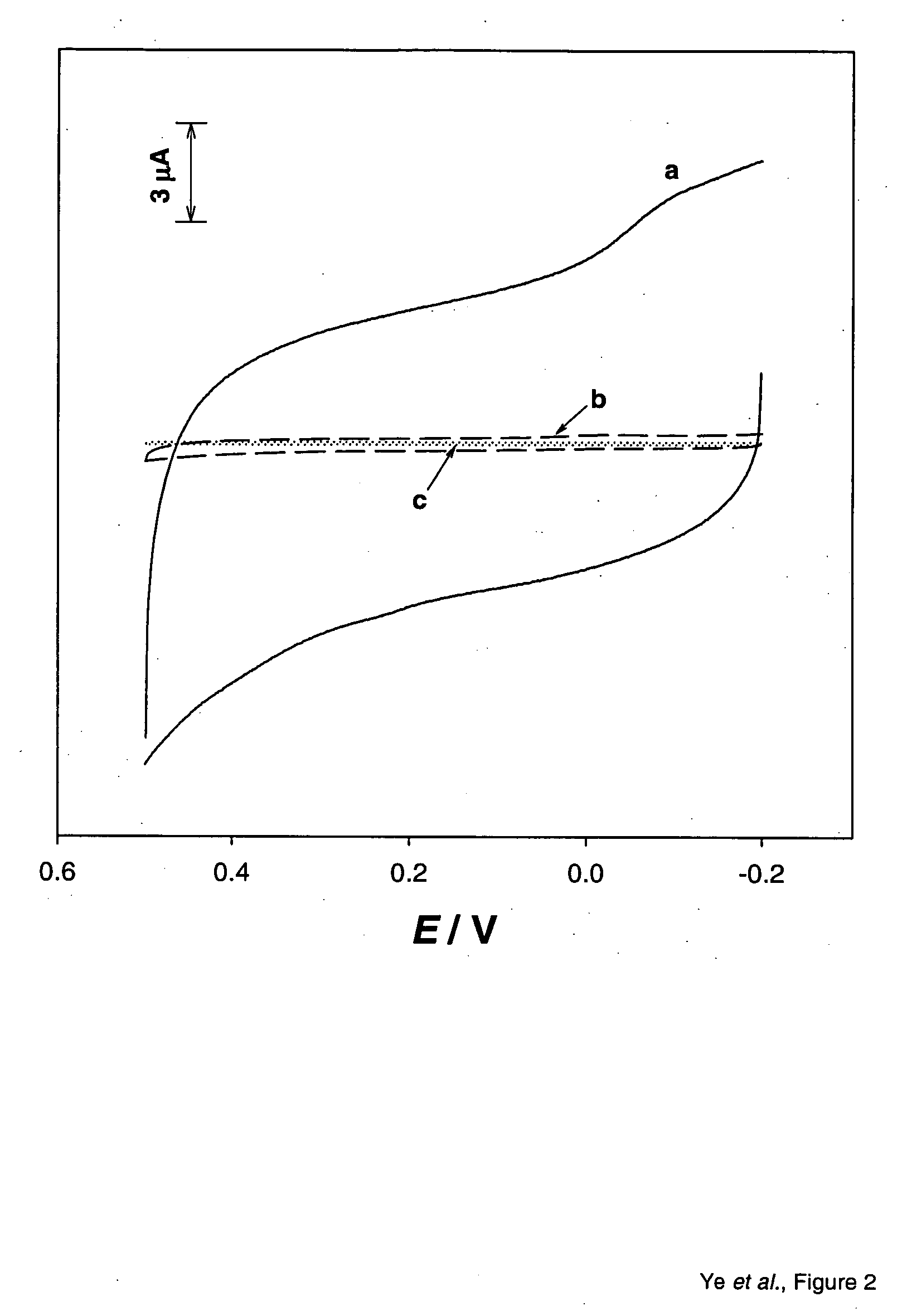Detection of biological molecules
a detection method and biological technology, applied in the field of detection of biological molecules, can solve the problems of poor selective detection, limited practical application, and hardly achieved long-term stability by any enzyme-based method
- Summary
- Abstract
- Description
- Claims
- Application Information
AI Technical Summary
Benefits of technology
Problems solved by technology
Method used
Image
Examples
example
7.1. Chemicals and Reagents
[0047] UA and L-AA were obtained from Aldrich and were used as received. All other chemicals used were of reagent grade. Deionized water was obtained by purification through a Millipore water system and was used throughout. All solutions were freshly prepared daily.
7.2. Synthesis of Well-Aligned MWNTs
[0048] The synthesis of well-aligned MWNTs has been reported previously in [37,38] wherein a Ta plate was used as a substrate and a thin cobalt (Co) layer of 8 to 50 nm was coated by magnetron sputtering onto the surface of Ta substrate as catalyst. The nanotubes used have diameters of 80 to 120 nm and a length of about 10 μm depending on the Co layer thickness and growth time [37].
[0049] The typical morphology of the well-aligned carbon nanotubes is shown in FIG. 1. The Ta substrate with or without MWNTs was connected to the surface of a glassy carbon electrode by conductive silver paint (Structure probe, Inc., USA). The edge of the Ta substrate and gla...
PUM
| Property | Measurement | Unit |
|---|---|---|
| pH | aaaaa | aaaaa |
| length | aaaaa | aaaaa |
| diameters | aaaaa | aaaaa |
Abstract
Description
Claims
Application Information
 Login to View More
Login to View More - R&D
- Intellectual Property
- Life Sciences
- Materials
- Tech Scout
- Unparalleled Data Quality
- Higher Quality Content
- 60% Fewer Hallucinations
Browse by: Latest US Patents, China's latest patents, Technical Efficacy Thesaurus, Application Domain, Technology Topic, Popular Technical Reports.
© 2025 PatSnap. All rights reserved.Legal|Privacy policy|Modern Slavery Act Transparency Statement|Sitemap|About US| Contact US: help@patsnap.com



